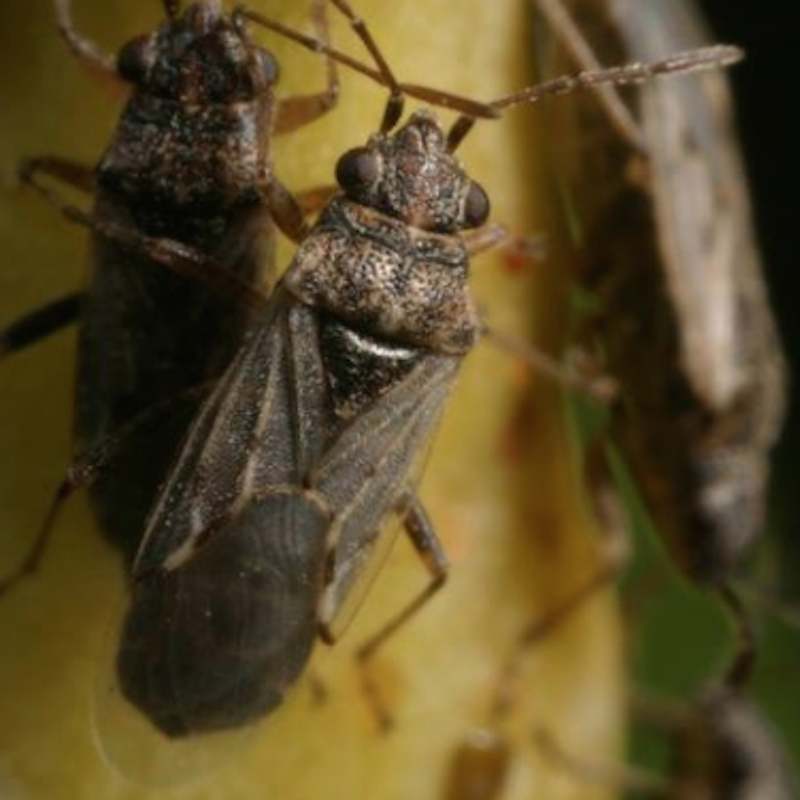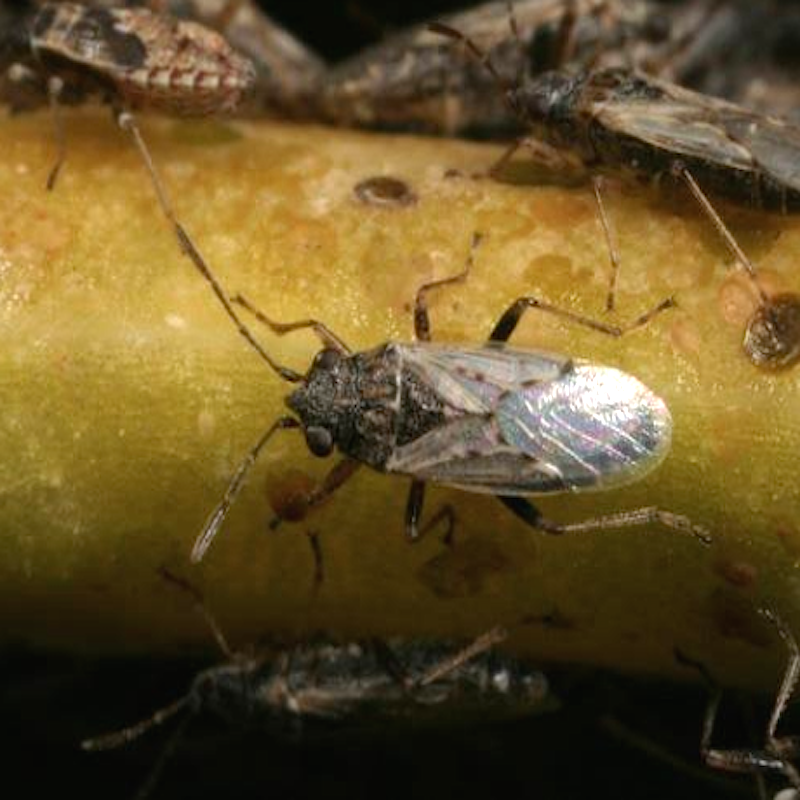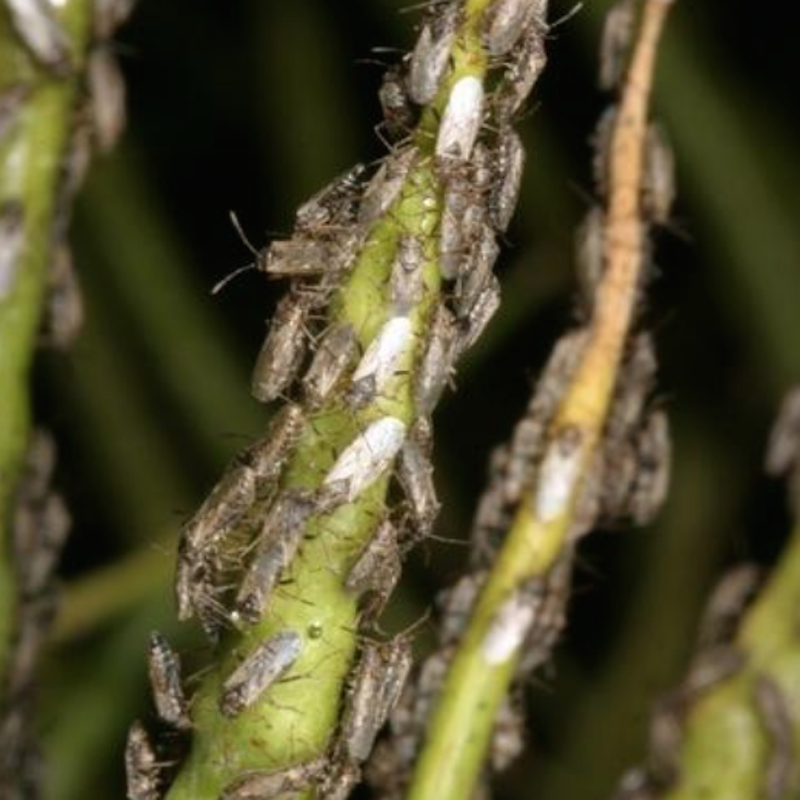
False chinch bug


False chinch bugs can occur in large numbers during mild, dry winters. Fall infestations of false chinch bugs could cause stand losses. Research from Colorado shows that severe damage can occur if false chinch bugs infest racemes during bloom and early pod fill. Based on this work, it is suggested that fields should be treated with a registered insecticide if 5 to 10 false chinch bugs occur on flowering racemes, and if 10 to 20 false chinch bugs occur on racemes during early pod set. False chinch bugs are common in ripe fields of canola, but damage rarely occurs once seed is fully formed.
|
Chemical Name |
Product(s) |
|
bifenthrin |
Annex, Bifenthrin, Capture, Discipline, Empower, Fanfare, Sniper and Tundra |
|
deltamethrin |
Delta Gold |
|
lambda-cyhalothrin |
Lambda T, Silencer, Taiga Z and Warrior with Zeon Technology |
|
gamma-cyhalothrin |
Proaxis |
|
soap salts |
M-Pede |
This web page was prepared to help producers manage insect populations with the best available methods proven practical under Kansas conditions. Pesticide label directions and restrictions are subject to change, and some may have changed since this publication was written. Kansas State University entomologists assume no responsibility for product performance, personal injury, property damage, or other types of loss resulting from the handling or use of the pesticides listed. Remember, it is illegal to use a pesticide in a manner that is inconsistent with the label. The user bears responsibility for correct use. Always read and follow label directions carefully.
